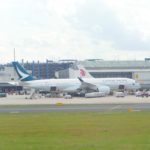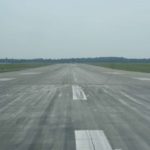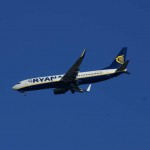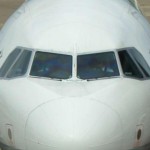Boeing [NYSE: BA] and Japan Airlines International today announced that the airline will install Boeing’s Class 3 Electronic Flight Bag (EFB) on two new 777 airplanes to be delivered beginning this year
SEATTLE — A 777-200 scheduled for delivery in May and a 777-300ER scheduled to join the fleet later in the year. The airline’s decision represents its first EFB order. Japan Airlines has 38 777s in operation and eight more on order.
The Boeing Class 3 EFB is a pilot-dedicated flight-deck computer integrated into an airplane’s avionics that has become a must-have device for airlines looking to improve both the safety and efficiency of their 777 fleets.
„We know our passengers will appreciate our willingness to invest in technology that helps us improve the safety, value and service we offer,“ said Tadao „Tad“ Sakai, vice president, Japan Airlines Flight Operations Engineering Department. „We’re convinced that with the Boeing Electronic Flight Bag, Japan Airlines has picked a device that will help give us a powerful competitive advantage.“
Boeing’s EFB has recorded more than 1,000 total orders since it was introduced for sale in 2002. It has been ordered for Next-Generation 737s, 747s, 757s, 767s, 777s and 787s (the Class 3 EFB comes as standard equipment on the 787 Dreamliner).
„We are pleased that Japan Airlines has picked Boeing to be a partner in its drive to continuously improve operations,“ said Dan da Silva, vice president of Sales and Marketing for Boeing Commercial Aviation Services. „Boeing’s Electronic Flight Bag represents a critical piece of our effort to enable airlines to gather and use timely information throughout their operation.“
Japan Airlines is one of the world’s leading airlines in its embrace of Boeing’s digital productivity solutions. It was an original development partner for Airplane Health Management, Boeing’s airplane monitoring tool that collects and delivers real-time maintenance information to airlines so that they can address potential problems before they force airplanes out of service. In 2005, Japan Airlines began monitoring its entire fleets of 777s and 747-400s with the tool.
In October of 2005, the airline adopted Boeing’s Maintenance Performance Toolbox, an award-winning suite of software tools that represents the industry’s first productivity software designed to unify an airline’s maintenance and engineering operations from start to finish.
And in 2006, Japan Airlines expanded its use of Boeing’s Integrated Materials Management program, in which Boeing manages most of the airline’s spare parts.
All of these technologies aim to collect and mobilize information that can help an airline improve its operations. Central to the effort is the idea that data, information and knowledge are shared across an entire enterprise so that airlines operate their fleets at the highest levels of safety, security and efficiency.
Boeing’s Class 3 EFB can serve as a critical communications gateway between the airplane in the sky and an airline’s operations center and maintenance department on the ground.





